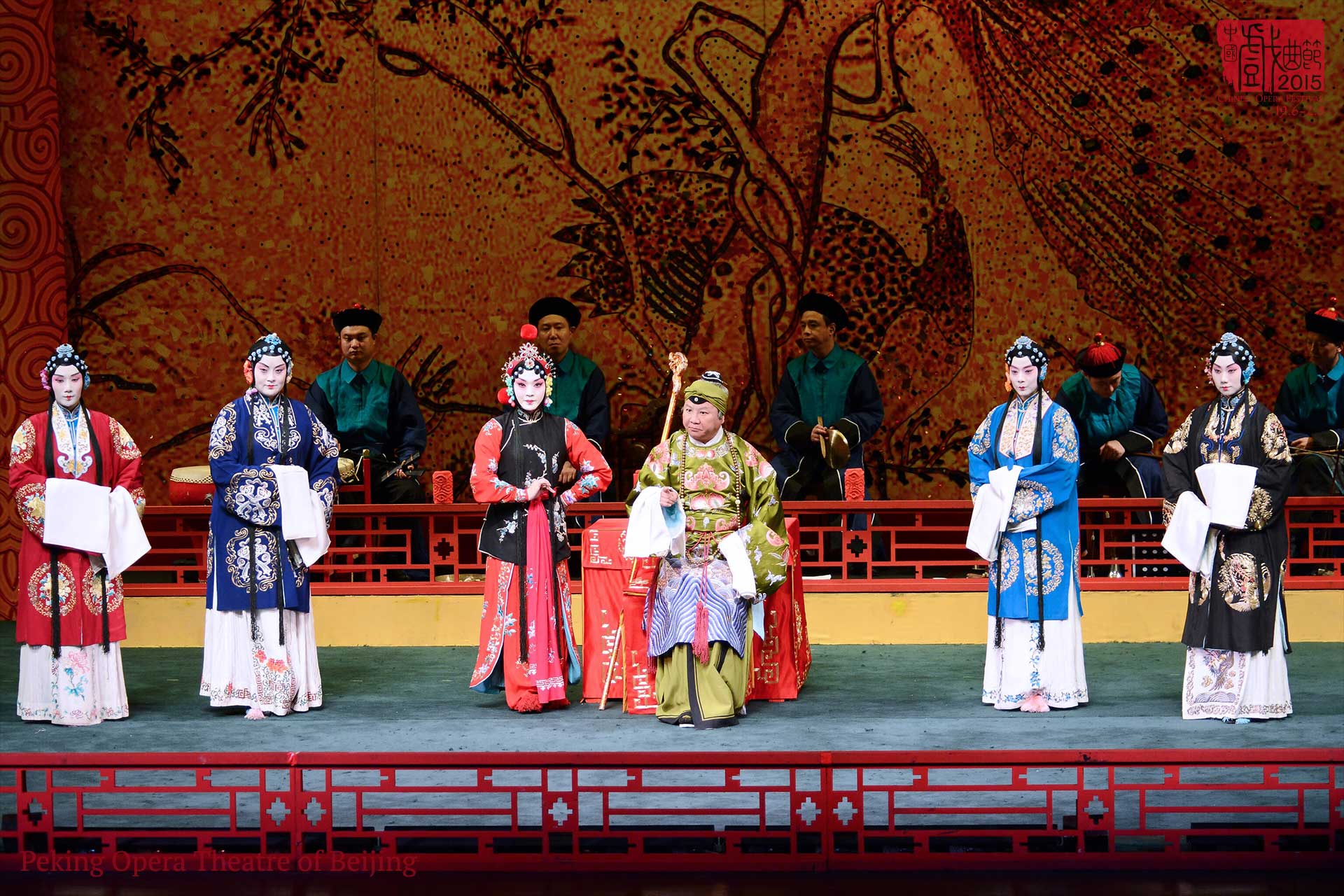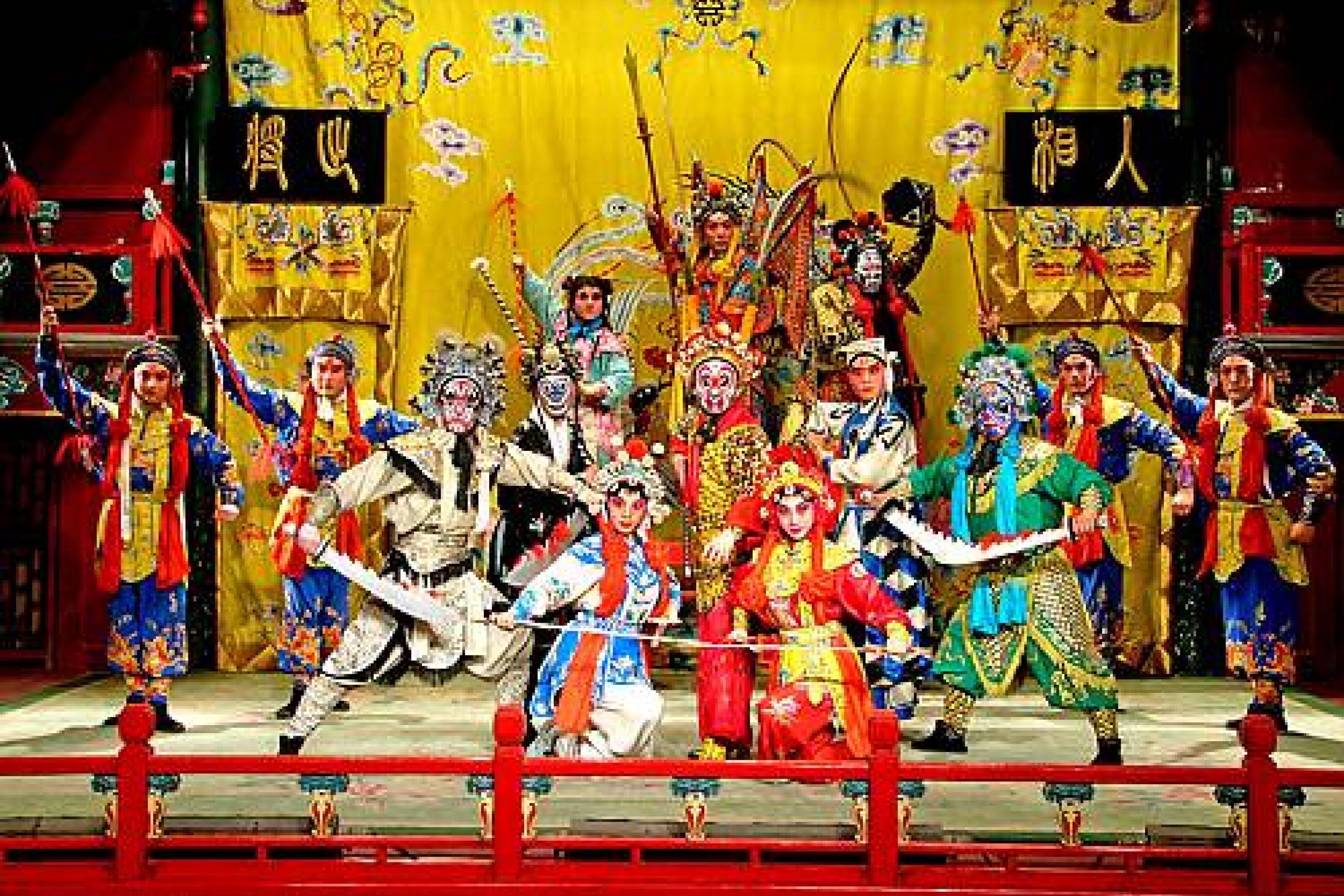

Performers also adhere to a variety of stylistic conventions that help audiences navigate the plot of the production. Above all else, the skill of performers is evaluated according to the beauty of their movements. They use the skills of speech, song, dance and combat in movements that are symbolic and suggestive, rather than realistic. With their elaborate and colorful costumes, performers are the only focal points on Peking opera's characteristically sparse stage. Performing troupes often have several of each variety, as well as numerous secondary and tertiary performers. Peking opera features four main role types, sheng (gentlemen), dan (women), jing (rough men), and chou (clowns). It has also spread to other regions such as the United States and Japan. The art form is also preserved in Taiwan, where it is also known as Guójù ( Chinese: 國劇 lit.

Major performance troupes are based in Beijing, Tianjin and Shanghai. The form was extremely popular in the Qing court and has come to be regarded as one of the cultural treasures of China. It arose in Beijing in the mid- Qing dynasty (1644–1912) and became fully developed and recognized by the mid-19th century. Peking opera, or Beijing opera ( Chinese: 京劇 pinyin: Jīngjù), is the most dominant form of Chinese opera, which combines music, vocal performance, mime, dance and acrobatics. "Peking Opera" in Simplified (top) and Traditional (bottom) Chinese characters


 0 kommentar(er)
0 kommentar(er)
